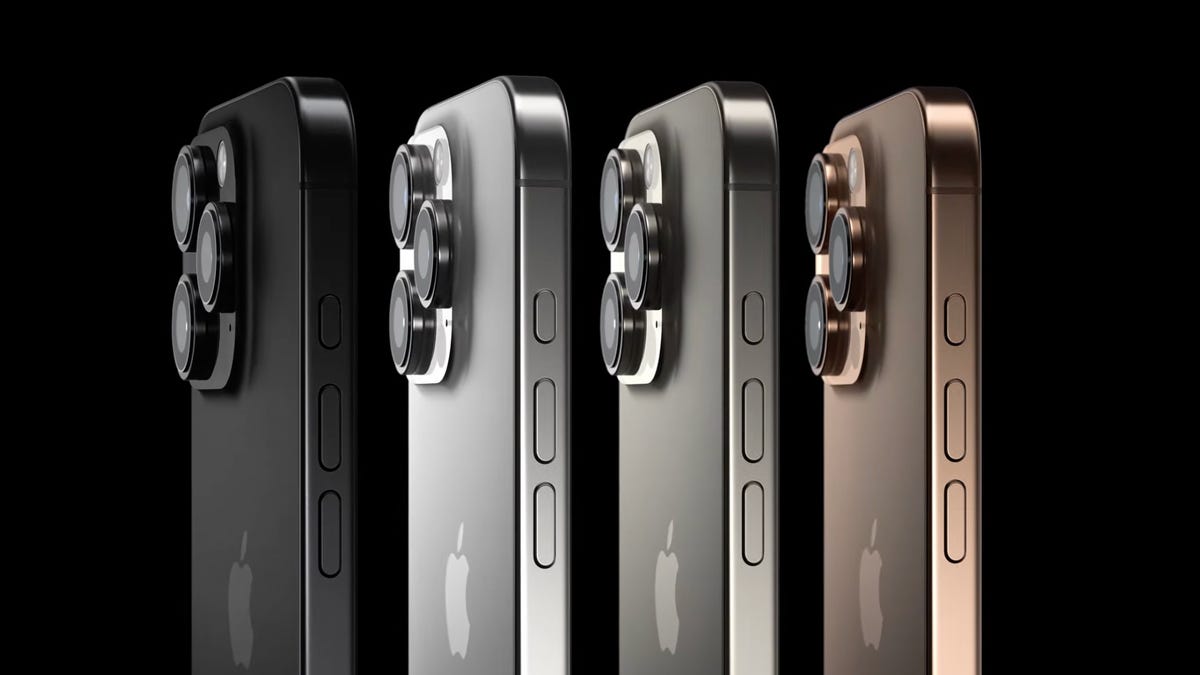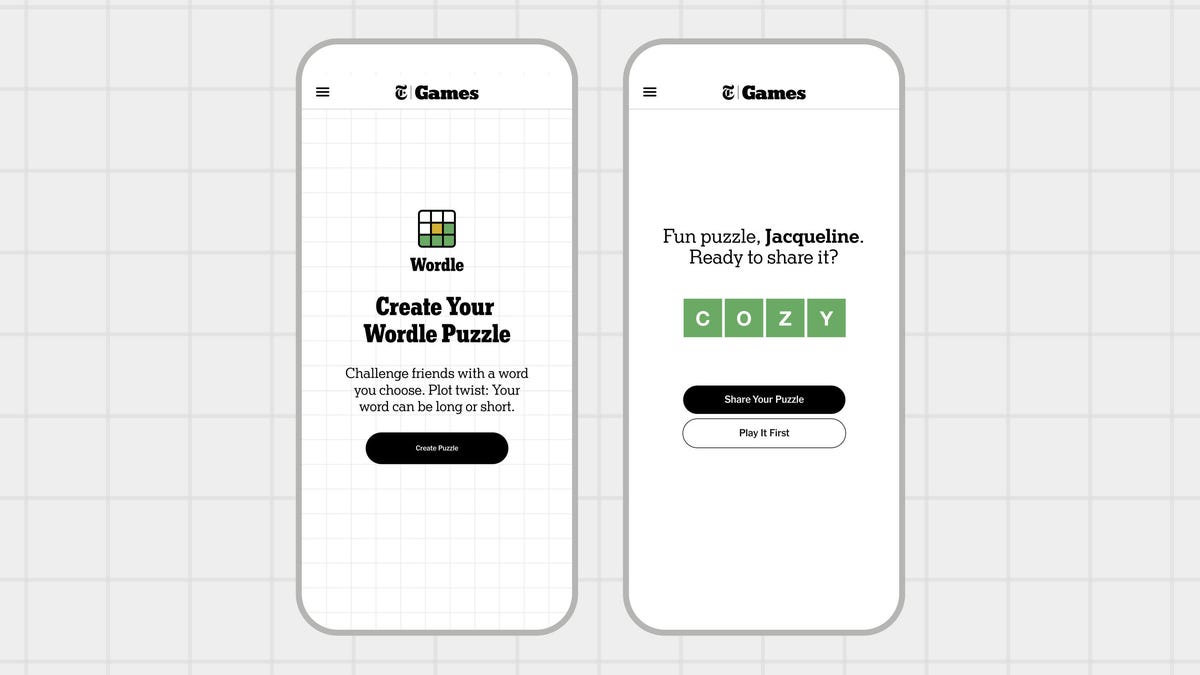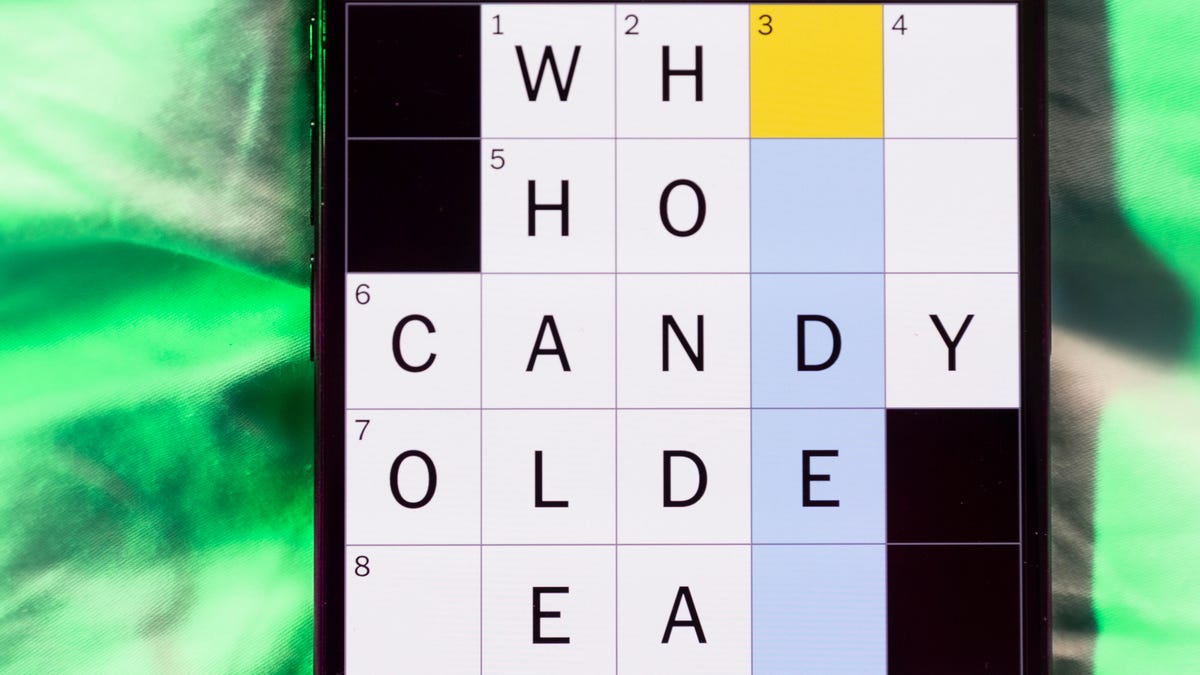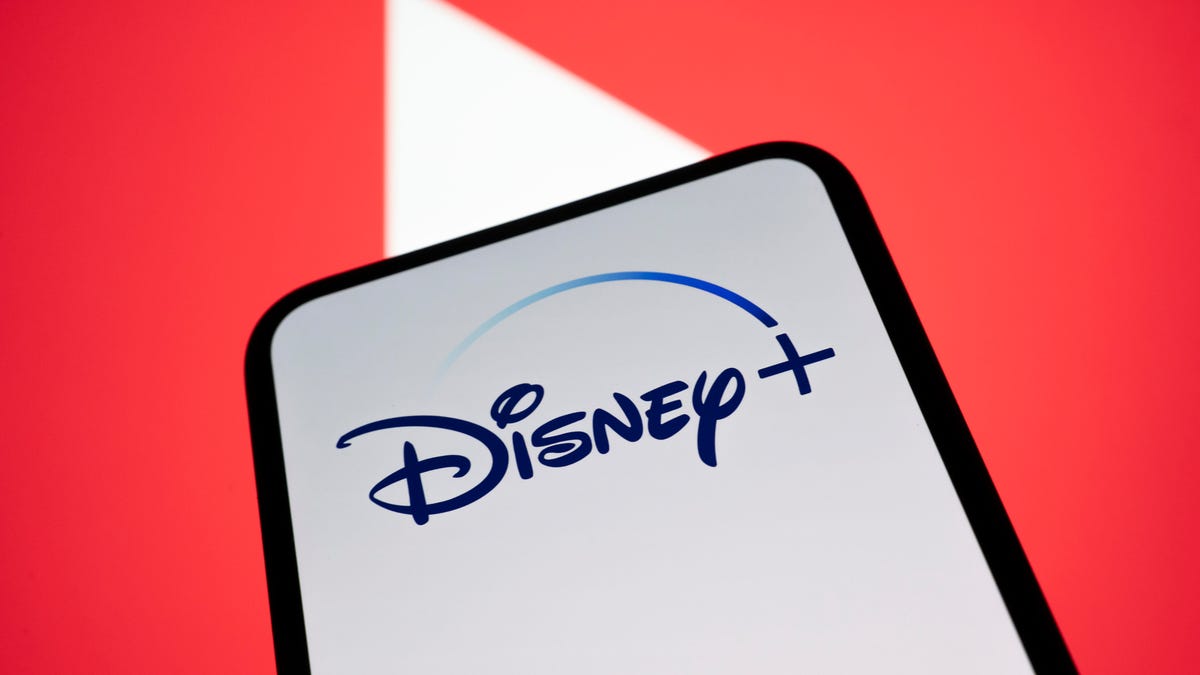Technologies
The iPhone 17 Pro ‘Feature’ I Want Most? More Colors Beyond Monochrome and Metal
Commentary: Why are Apple’s best phones restricted to black and white or silver and gold?

While we can all agree that what’s inside an iPhone is far more important than the outside, I still care a ton about how my smartphone looks. So with all the rumors swirling about the upcoming iPhone 17, one that caught my eye had nothing to do with specs or features. It simply said the iPhone 17 Pro could adopt color inspired by iOS 26’s Liquid Glass redesign — which, based on descriptions, may resemble some older Samsung phone hues. And I started dreaming about a world where Apple’s best phones look as fun as their lower-tier siblings.
For years, Apple has split its phones into two tiers: the «regular» iPhones and the Pro models. The former offer lower specs and prices with bolder colors, while the latter are pricier premium models with more subdued tones. The iPhone Pro and Pro Max typically come in black, white and a silver-gray — along with one trendier color that changes each year. For being the best that Apple offers, their colorways leave a lot to be desired, in my opinion.
But the iPhone 16 Pro comes in desert titanium, which is gold in all but name. The year before, the iPhone 15 Pro was available in a gray-blue (which I remember well, if not fondly, for not matching my vintage Bondi blue case). In 2022, the iPhone 14 Pro left white behind for gold and added a pastel purple alongside its black and silver hues — and so on.
Some people dropping $1,000-plus on a souped-up iPhone Pro want their device to look svelte, not superlative — elite over effervescent, cultured instead of colorful. I’m not that person. When I saw the iPhone 5C, I didn’t mind the cheaper-looking plastic case — the vibrant colors popped. I don’t think buying a premium phone should sentence you to a purgatory of dimmer hues.
And yes, there are those of you out there who don’t care what your phone looks like, since its colors will only briefly see the light of day before the handset is stuffed in its case to survive life’s inevitable bounces and falls. That’s completely valid, too.
So hearing that there’s a potential Liquid Glass color coming to the iPhone 17 Pro that we expect to launch (as we do every year) in September, I got tentatively excited. But there’s a big caveat: The rumor, sourced to Weibo-based leaker Instant Digital, didn’t include a photo or any imagery of this potential debut. Instead, the leaker suggested that (as translated by Google Translate) the iPhone 17 Pro color is expected to be white, but with a finish that shifts or changes subtly under different lighting conditions.
Where are my prismatic phone colors?
Apple introduced its Liquid Glass update during WWDC 2025 in June, unveiling a new design strategy for the iPhone 17 Pro line that emphasizes translucence and rounded icons to give iOS 26 a fresh UI facelift. App makers responded to the initial developer betas with disdain, criticizing the design’s distracting and disorienting lack of visual separation — icons in the Control Center overlay were hard to see. Thankfully, subsequent tweaks improved the redesign ahead of the recently launched iOS 26 public beta.
But how Liquid Glass’s design looks as an iPhone color is a bit harder to fathom. Instant Digital’s claim that it’ll be white but will shift with the light offers clues— and it could end up looking like some beloved colors from smartphones of yore.
For instance, the 2018 Samsung Galaxy S10 came in a rather fetching prism white color that shimmered when you rotated it in the light, giving off a pearlescence of subtle pinks, purples and blues. Watch how it compares to the standard cream-colored ceramic white hue in this video from Sakitech.
Contrast that with the more wildly prismatic «aura glow» color in the Samsung Galaxy Note 10 from the same year, which reflected every color of the rainbow. This bombastic choice sure was eye-catching, but I’d guess it’s too flamboyant for Apple. (And the beautiful glass back sure couldn’t stand up to a fall.)
True, Apple has dabbled in subtly shimmering colors — the iPhone 13 and 13 Mini came in midnight, a black so deep it was almost blue, reflecting hints of hidden hues underneath. That same year’s iPhones had another color, starlight, that was essentially the same effect in white.
But looking more closely at iPhone Pro designs from past years, I doubt we’ll see anything as vivacious as those Samsung hues — not only because Apple has avoided vibrant colors, but also because in recent years it’s used a frosted rear glass that blurs and mutes the color beneath. Just what we end up getting from a Liquid Glass color, if anything at all, is very uncertain given Apple’s design priorities.
But I’m hoping, just this once, the Pro phones get to show off a bit more of their stuff. And who knows — maybe that’ll be what finally sells us on the upcoming Liquid Glass redesign that’s set to change the look and feel of iOS, like it or not.
Technologies
How to Make and Share Your Very Own Wordle Puzzles
Wordle obsessives, you can now make personal inside joke puzzles to send them to friends.

Wordle’s an immensely popular word game (we post the answers daily) from The New York Times, but it’s not the most personal game in the world. Answers such as GUISE and PERIL are tricky, but generic. Now, Wordle fans who have dreamed of making their own puzzles can test their friends and family by creating their own Wordle creations up to seven letters in length.
Here’s how to do it.
Don’t miss any of our unbiased tech content and lab-based reviews. Add CNET as a preferred Google source.
- No surprise, you have to be a New York Times Games or All Access Subscriber to use this feature. If you are, you’ll find the Create a Puzzle option available from the top menu above today’s Wordle.
- Enter a word, and the site will tell you if it is available. Real Wordle limits you to five-letter words, but the puzzle-making feature lets you choose words between four and seven letters.
- The usual dictionary rules apply, and so curse words, some pet names and obscure inside jokes are essentially out. If your cat is named TANGO, that’s there, but RINGO is not an option. You can drop a proposal with a single word like MARRY, but MARRYME will be rejected, since that’s two separate words.
- Word chosen, you can then fill out your name and add an optional hint, and the feature will generate your puzzle with a link you can send around. Unlike standard puzzles, your puzzle doesn’t appear to reset after a day, so whoever you send it to doesn’t need to rush to solve it.
While you must be a subscriber to create your own personalized puzzle, you can share it with anyone — they only need the link, not a subscription, to complete your Wordle.
Looking for the most recent Wordle answer? Click here for today’s Wordle hints, as well as our daily answers and hints for The New York Times Mini Crossword, Connections, Connections: Sports Edition and Strands puzzles.
Technologies
Today’s NYT Mini Crossword Answers for Saturday, Nov. 15
Here are the answers for The New York Times Mini Crossword for Nov. 15.

Looking for the most recent Mini Crossword answer? Click here for today’s Mini Crossword hints, as well as our daily answers and hints for The New York Times Wordle, Strands, Connections and Connections: Sports Edition puzzles.
Need some help with today’s Mini Crossword? The Saturday puzzle is always the longest of the week, so it’s not quite as easy as the other days. Today’s wasn’t too terrible. Read on for the answers. And if you could use some hints and guidance for daily solving, check out our Mini Crossword tips.
If you’re looking for today’s Wordle, Connections, Connections: Sports Edition and Strands answers, you can visit CNET’s NYT puzzle hints page.
Read more: Tips and Tricks for Solving The New York Times Mini Crossword
Let’s get to those Mini Crossword clues and answers.
Mini across clues and answers
1A clue: Theatrical role
Answer: PART
5A clue: Capital of Vietnam
Answer: HANOI
6A clue: Father of a «fur baby»
Answer: CATDAD
7A clue: Words often accompanied by a ring
Answer: MARRYME
8A clue: Whirling currents
Answer: EDDIES
9A clue: Put up, as a statue
Answer: ERECT
10A clue: Race that’s about half the length of a half-marathon
Answer: TENK
Mini down clues and answers
1D clue: SpongeBob’s starfish friend
Answer: PATRICK
2D clue: Despite it all …»
Answer: ANDYET
3D clue: Wanders here and there
Answer: ROAMS
4D clue: Company with a «To Go» stain remover
Answer: TIDE
5D clue: Become firm
Answer: HARDEN
6D clue: Small group of soldiers
Answer: CADRE
7D clue: What parallel lines never do
Answer: MEET
Technologies
Touchdown! Disney, ESPN and Other Channels Are Back on YouTube TV
YouTube TV subscribers no longer need another streaming service — or to visit a sports bar — to watch the NFL or college football.

YouTube TV subscribers, your channels — and your football — are back. Disney and YouTube said Friday night that the two companies had reached an agreement. YouTube TV subscribers lost all of Disney’s channels, including ESPN and ESPN2, on Oct. 30. Those who wanted to watch NFL or college football on ABC, ESPN or ESPN2 or Disney family-friendly hits such as Bluey, had to find other alternatives.
«We’re happy to share that we’ve reached an agreement with Disney that preserves the value of our service for our subscribers and future flexibility in our offers,» a YouTube spokesperson said. «Subscribers should see channels including ABC, ESPN and FX returning to their service over the course of the day, as well as any recordings that were previously in their Library. We apologize for the disruption and appreciate our subscribers’ patience as we negotiated on their behalf. «
Don’t miss any of our unbiased tech content and lab-based reviews. Add CNET as a preferred Google source.
The companies said in a statement that they reached a multi-year deal and were already restoring the channels to YouTube TV.
According to YouTube, subscribers should see content and saved recordings restored over the next 24 hours. So if you don’t have them back yet, they should show up soon.
I’m a YouTube TV subscriber myself, and as of 5:30 p.m. PT on Friday, Disney, ESPN and other channels have been restored for me. As a die-hard Minnesota Vikings fan (yes, I know), I added Fubo TV temporarily, but I won’t be keeping that subscription.
According to the statement, the deal will include the restoration of the channels, plus other items. The unlimited version of ESPN’s new direct-to-consumer service will now be made available at no additional cost to YouTube TV subscribers. Subscribers will also have access to a selection of live and on-demand programming from ESPN Unlimited inside YouTube TV. Also, select networks will be included in various genre-specific packages, and there will be the ability to include the Disney Plus Hulu Bundle as part of select YouTube offerings.
«This new agreement reflects our continued commitment to delivering exceptional entertainment and evolving with how audiences choose to watch,» Disney Entertainment Co-Chairmen Alan Bergman and Dana Walden and ESPN Chairman Jimmy Pitaro said in the statement. «It recognizes the tremendous value of Disney’s programming and provides YouTube TV subscribers with more flexibility and choice. We are pleased that our networks have been restored in time for fans to enjoy the many great programming options this weekend, including college football.»
Disney-owned channels were pulled on Oct. 30 when the agreement between the two companies expired.
According to The Hollywood Reporter, the resulting 25-day blackout was the longest in recent memory for Disney.
Here’s a full list of the channels that were removed due to the dispute:
- ABC
- ABC News Live
- ACC Network
- Baby TV Español (Spanish Plan)
- Disney Channel
- Disney Junior
- Disney XD
- ESPN
- ESPN Deportes (Spanish Plan)
- ESPNews
- ESPNU
- ESPN2
- Freeform
- FX
- FXM
- FXX
- Localish
- Nat Geo
- Nat Geo Mundo (Spanish Plan)
- Nat Geo Wild
- SEC Network
-

 Technologies3 года ago
Technologies3 года agoTech Companies Need to Be Held Accountable for Security, Experts Say
-

 Technologies3 года ago
Technologies3 года agoBest Handheld Game Console in 2023
-

 Technologies3 года ago
Technologies3 года agoTighten Up Your VR Game With the Best Head Straps for Quest 2
-

 Technologies4 года ago
Technologies4 года agoBlack Friday 2021: The best deals on TVs, headphones, kitchenware, and more
-

 Technologies4 года ago
Technologies4 года agoVerum, Wickr and Threema: next generation secured messengers
-

 Technologies4 года ago
Technologies4 года agoGoogle to require vaccinations as Silicon Valley rethinks return-to-office policies
-

 Technologies4 года ago
Technologies4 года agoOlivia Harlan Dekker for Verum Messenger
-

 Technologies4 года ago
Technologies4 года agoiPhone 13 event: How to watch Apple’s big announcement tomorrow
